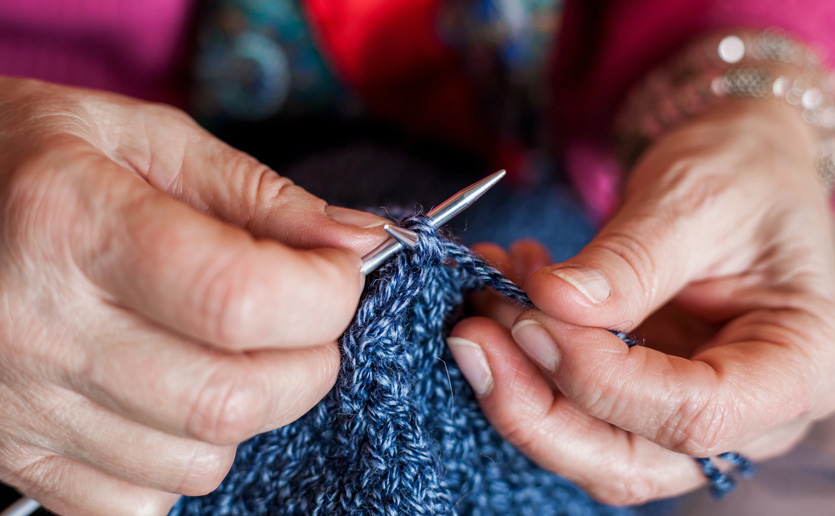People with hand osteoarthritis often wake up to pain and stiffness. They may have trouble opening jars. They might also notice when they use their hands a lot and perform activities like knitting or yard work, their symptoms are worse.
People typically notice osteoarthritis beginning in their 50s and 60s.
The joints in the hand are a common place for arthritis to appear as we age, says Marcy Bolster, MD, a rheumatologist at Massachusetts General Hospital and director of the Mass General Rheumatology Fellowship Training Program. The cause is unknown, although some forms seem to run in women in families. There are no medications to prevent or cure it.
The good news is, with a physician’s guidance, hand osteoarthritis can be diagnosed and managed, Dr. Bolster says.
Diagnosing Hand Osteoarthritis
Osteoarthritis starts with the breakdown of connective tissue in the joint called cartilage. Bony changes also occur resulting in osteophytes or bony spurs. It is these bony enlargements that can change the hands’ appearance. The enlargements may contribute to hand stiffness and pain and may also reduce the patient’s level of dexterity to perform tasks with their hands.

Some people have periods of pain, dependent on their activity level, while others experience more consistent discomfort. People typically notice osteoarthritis beginning in their 50s and 60s.
Patients should talk to their primary care doctor first if they are concerned about arthritis in their hands.
Primary care doctors can use the patient’s history, physical exam and X-rays to make a diagnosis of hand osteoarthritis, recommend treatments and help patients decide if they need to see a rheumatologist, Dr. Bolster says.
Hand osteoarthritis affects specific joints in the fingers and base of the thumb. The hand joints most commonly affected are the distal interphalangeal joints, which are closest to the fingertips, the proximal interphalangeal joints, which are in the middle of the fingers, as well as the joints at the base of the thumb.
Ruling Out Rheumatoid Arthritis
It is important to have hand joint pain diagnosed because there are other forms of hand arthritis, known as inflammatory arthritis, such as rheumatoid arthritis (RA), that affect the hands, too. But RA has a different pattern of joint involvement.
Treatment options are focused on reducing pain and stiffness to improve function and quality of life.
RA is an autoimmune disease.
Determining whether a person has RA is critical because treating RA early is better for the patient and can slow the effects on joints. There are also specific medications used to treat RA.
The symptoms of osteoarthritis and RA can be different.
When waking in the morning, patients with osteoarthritis will notice their hands feel better after several minutes. For patients with RA, morning stiffness can last longer, even for several hours.
Consider Non-Medication Options
Dr. Bolster advises patients to listen to their bodies and not overdo it if they are experiencing a lot of pain. Overdoing it could make the joints feel worse, while a period of rest could return patients to their activities sooner.
It is important to talk to your primary care doctor or rheumatologist when considering treatments because some medications, even if they are over-the-counter, are not safe for everyone, she says.
Patients do very well with medications. There are also non-medication ways to manage pain through awareness of activities, occupational therapy sessions, splinting of joints at night and paraffin wax hand baths.
“Treatment options including medications and non-pharmacologic approaches for patients with hand osteoarthritis are focused on reducing pain and stiffness to improve function and quality of life,” Dr. Bolster says.
Treatments Include:
- Acetaminophen. There are several types, including one designed for arthritis.
- Non-steroid anti-inflammatory medications (oral and topical)
- Paraffin wax hand baths as a form of heat therapy
- Nighttime use of thumb splints to rest the joint from movement during sleep. The eight hours of rest can reduce daytime pain.
- Corticosteroid injections into the joint at the base of the thumb to reduce inflammation, enable more movement and provide pain relief for several months or longer
- Surgery, depending on the joint’s location and degree of arthritis.
To support the work of Dr. Bolster and her colleagues in the Division of Rheumatology, please contact us.






